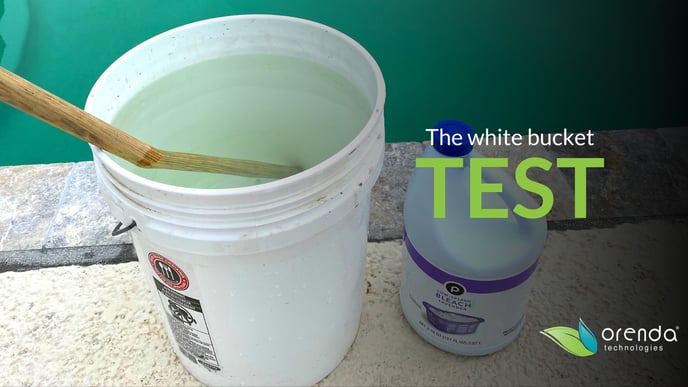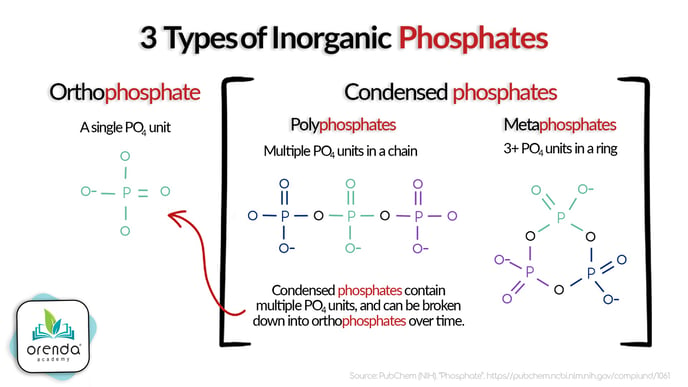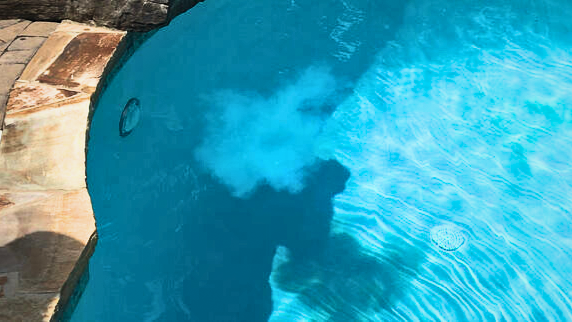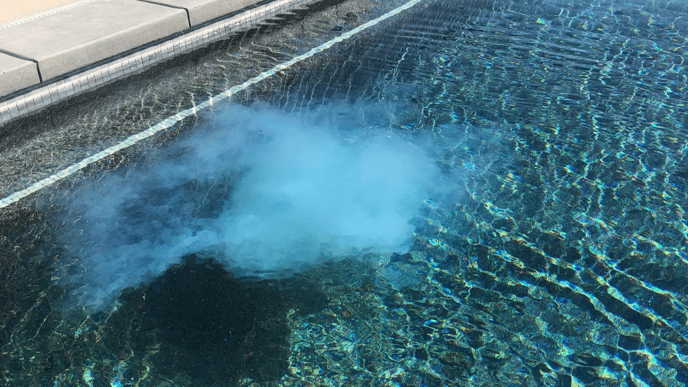Three 100% reliable tests for metals, cyanuric acid, and phosphates
These three simple tests are guaranteed to identify if metals, cyanuric acid, or phosphates are in the water (or not).
While test kits are usually precise, everything has limitations. Sometimes we just need to know, without any doubt, if something is in our water or not. Flawed tests can occur with expired reagents or other interferences, but these three tests work 100% of the time. And they are not meant to be precise; these tests are simply to tell you (yes or no) if something is in your water or not.
1. The white bucket test
Want to know if a pool (or tap water) has metals in it? Or want to diagnose why water is green? Use the white bucket test.

The white bucket test is fast and easy. Fill a clean white bucket at least halfway full with pool water (or tap water). Then add about 3 or 4 ounces of liquid chlorine, and stir.
That's it.
If metals are present in the water, it will change color and/or get darker and more discolored. Iron will turn water brownish red, copper will turn it blueish green (or turquoise), and manganese will turn it dark purple. Copper cyanurate will turn bright purple, almost pink.
If the water is green from algae, tannins, or some other oxidant, chlorine should clear up the water within 30 seconds. It should be noticeably more clear.
Make sure the bucket is rinsed out before doing this to be sure no residual chemicals from your previous pool treatments are in there.
One final note: use liquid chlorine only because cal hypo or trichlor are white powders that tend to distort the color of the water. It's not a fair representation of water clarity.
2. Melamine CYA test
This test is exactly as you would perform it in the Taylor Test kit. Melamine is the white reagent (R-0013 Cyanuric Acid Reagent). If cyanuric acid is in the water, melamine will react with it and create something called melamine cyanurate (C3H6N6 – C3H3N3O3). Melamine cyanurate clouds in the test vial, so the test is considered a turbidity test.
Note: never add melamine directly to a swimming pool, this process and byproducts are considered harmful. Only do this test in a vial so that the water will be discarded afterward.
For this conversation, we're not referring to accuracy or precision. All we are saying is this melamine reagent will cloud the water if CYA is present.
3. Red cap test (PR-10,000)
Got phosphates? If so, at what levels?
Most phosphate tests measure orthophosphate, which is the building block of other phosphate compounds; among them are sequestering agents, which are often products like phosphoric or phosphonic acid. These compounds do not show up on an orthophosphate test kit until they have been in the water long enough to be broken down by sunlight and/or an oxidizer (chlorine) to become orthophosphate.
Related: How to use PR-10,000
Related: PR-10,000 FAQs
 Because of these phosphate compounds not showing up on tests, it is common to test levels that are less than half of the actual phosphate level in the pool. So instead of relying on phosphate test kits, we have a more reliable way of knowing if phosphate levels are high enough to justify a PR-10,000 treatment. We call it the red cap test.
Because of these phosphate compounds not showing up on tests, it is common to test levels that are less than half of the actual phosphate level in the pool. So instead of relying on phosphate test kits, we have a more reliable way of knowing if phosphate levels are high enough to justify a PR-10,000 treatment. We call it the red cap test.

Related: PR-10,000 clouded my pool but did not reduce my phosphate levels. Why?
Simply fill the red cap of a PR-10,000 bottle with the product, then pour it in the pool in one spot. Count to 30 seconds. If you have phosphates present in your water, PR-10,000 will begin to form a white cloud, like the one shown in the photo above.
If PR-10,000 clouds, you are watching it remove phosphates.

Again, this red cap test is not designed to be precise or scientific (though it is coined as our "super scientific" phosphate test...shout out to Randy Elo!). The point of the test is to show you A) if you have phosphates present in the water, and B) if it clouds larger than a basketball in 30 seconds, it's probably worth treating. But then again, we have also seen just a capful of PR-10,000 cloud up half a backyard pool.